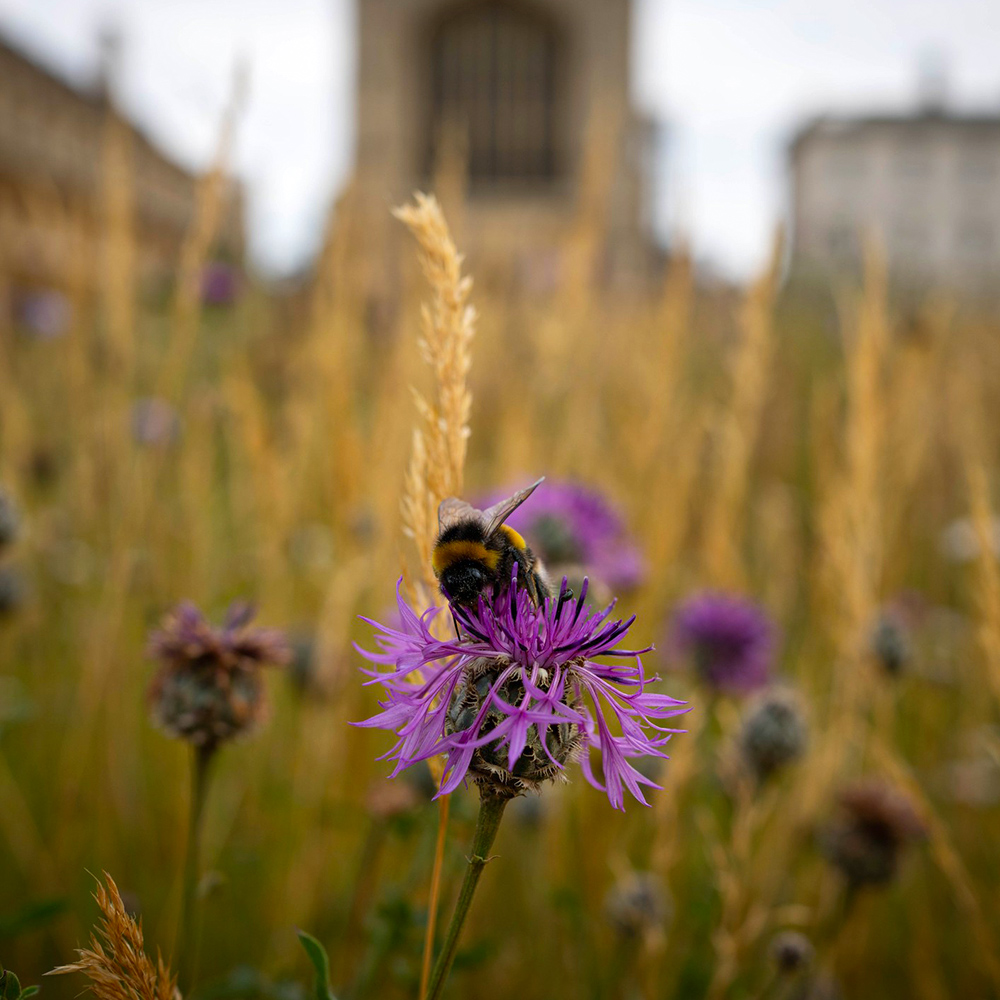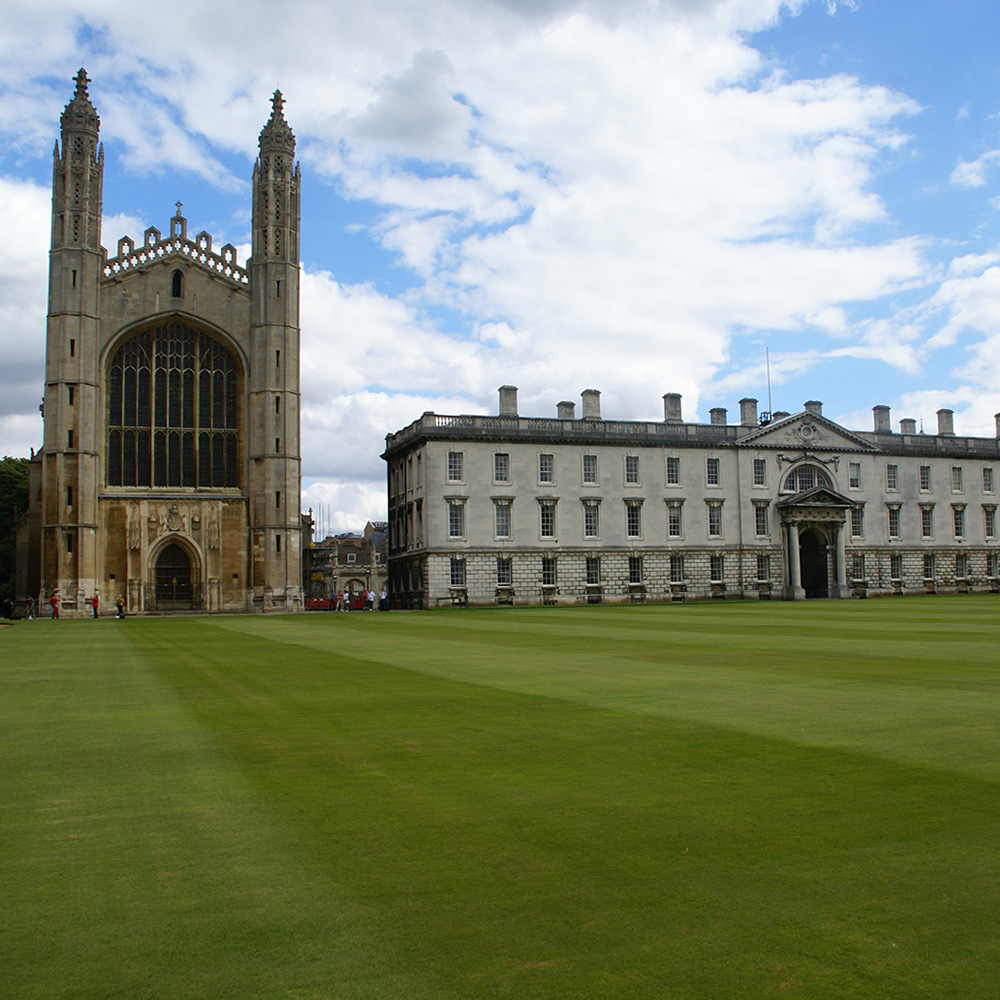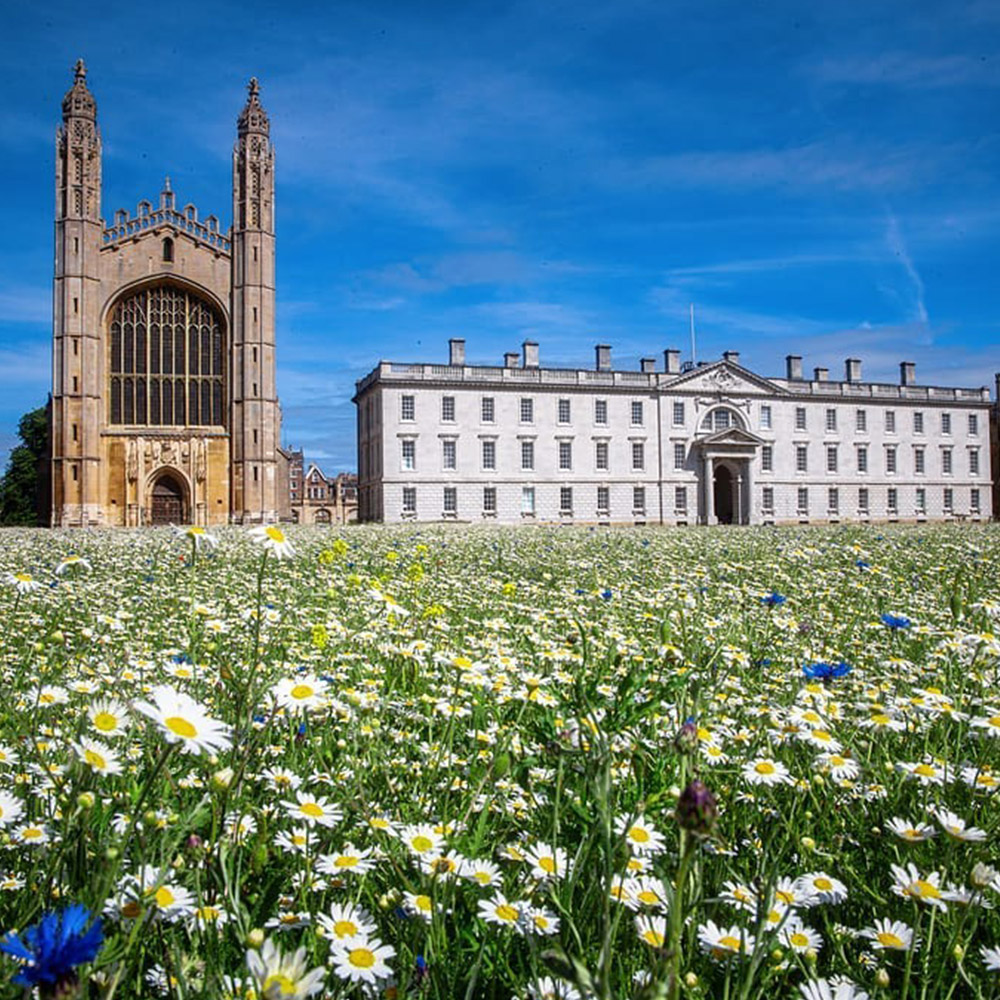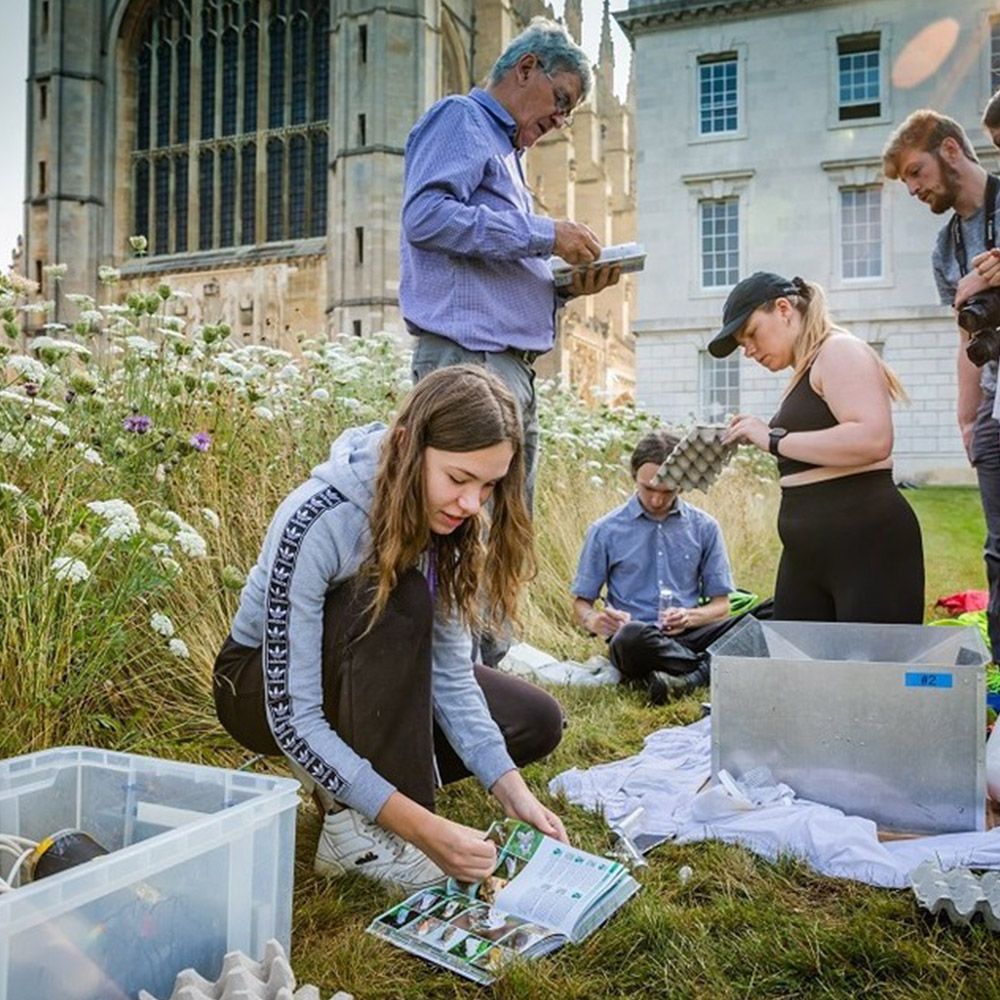'No Mow May' is a campaign by the British charity organization Plantlife to encourage garden owners to let wildflowers grow in their lawns and benefit pollinators. It looks like this campaign inspired King's College of Cambridge, UK.
Back to May 2020
It was in May 2020, in the midst of the corona pandemic, when it happened. Many things went differently in one way or the other during that year. All over the world, there was a sudden realization of how vulnerable we humans are, and how fragile our planet is. Did that play a role?
For nearly three centuries, the University of Cambridge maintained an unbroken tradition of meticulously mowing its sprawling lawns. These immaculate green spaces were a hallmark of the institution, embodying the pristine, orderly image the university has cultivated over the years. But in a surprising twist of tradition, this renowned institution decided to leave a section of its historic lawn uncut. What happened next was nothing short of remarkable.


No Mow May at King's College: A 300-Year-Old Tradition Broken
The decision to skip mowing wasn't made lightly. It was part of an experimental approach to better understand how nature would respond if left to its own devices. This seemingly small act of neglect — letting the grass grow wild — unleashed an unexpected burst of biodiversity. Over a relatively short period, the once uniformly green lawn transformed into a vibrant, colorful meadow teeming with life.
Without the intervention of regular mowing, various wildflowers, and plants, previously suppressed by the constant cutting, began to flourish. Species such as buttercups, daisies, and even some rare native plants made an appearance. These wild blooms not only added splashes of color to the university's grounds but also attracted a diverse array of wildlife, including bees, butterflies, and other pollinators that hadn't been seen in such numbers for years.
The rewilding of this small patch of land highlighted a key point about biodiversity: when given a chance, nature quickly rebounds. The uncut grass allowed a natural ecosystem to re-establish itself, providing essential habitats for insects and small animals. This, in turn, fostered a healthier environment overall, illustrating how even minor changes in land management practices can have significant ecological impacts.
Rethinking Lawn Maintenance
This experiment at Cambridge University aligns with a broader, growing movement that challenges the traditional view of lawns. For centuries, lawns have been symbols of wealth, order, and control over nature, with their maintenance requiring significant resources — water, fertilizers, pesticides, and of course, labor. However, this experiment is a powerful reminder that rethinking our approach to these green spaces can yield unexpected and beneficial results.
The university's decision to allow a section of the lawn to grow wild has sparked conversations about the potential for similar practices elsewhere. The idea is simple yet profound: less mowing could mean more biodiversity, less environmental impact, and a richer natural experience for those who enjoy these green spaces.

For florists, landscape designers, and gardeners, there’s an exciting opportunity here to rethink how green spaces are designed and maintained. Instead of striving for uniformity and control, working more closely with nature, rather than against it, is considered stronger than before, to create environments that are not only beautiful but also ecologically sound.
This experiment underscores the importance of balancing tradition with innovation, and of being open to new ideas — even when they go against the grain. By simply letting the grass grow, Cambridge University has provided a compelling case for the ecological and aesthetic benefits of a more natural approach to lawn care.
For those of us in the floral and landscape industries, this could inspire a shift towards creating spaces that encourage biodiversity, support wildlife, and bring people closer to nature. It’s a reminder that sometimes, the most beautiful and vibrant landscapes are those that nature designs herself.
An Initiative From Plantlife
Plantlife concludes with a call for help to everyone with a big or small lawn:
"We’ve lost approximately 97% of flower-rich meadows since the 1930s and with them gone are vital food needed by pollinators, like bees and butterflies.
But your lawn can help! A healthy lawn with some long grass and wildflowers benefits wildlife, tackles pollution, and can even lock away carbon below ground. With over 20 million gardens in the UK alone, even the smallest grassy patches add up to a significant proportion of our land which, if managed properly, can deliver enormous gains for nature, communities, and the climate.
This is why Plantlife calls for people to get involved with #NoMowMay every year, and let wild plants get a head start on the summer."
Best of all, to reap these benefits all you have to do is not mow your lawn in May and beyond! How's that for a win-win!?

This article was inspired by a blog post 'A Break From the Lawn' written by Jacqueline Garget from the University of Cambridge.
Image credits: Header and feature image by Jacqueline Garget from the University of Cambridge. Other images from David Baron from Flickr, King's College Instagram.










